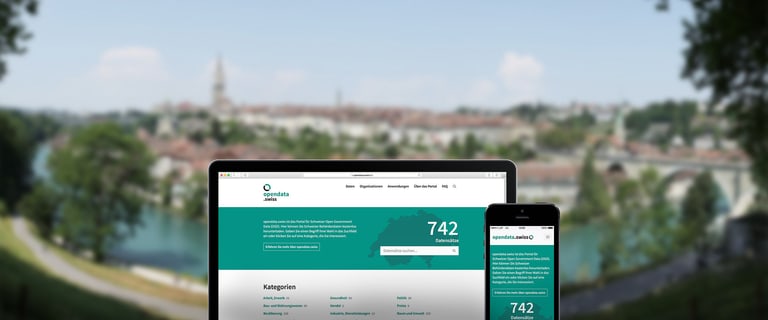Calls for free public access to machine-readable government data have grown ever louder. The public administration generates huge volumes of high-quality, valuable data on subjects as varied as sociodemographics, spatial planning and the environment, or economics, which could be a real treasure trove for software developers, designers, journalists, business people and researchers, to name but a few of the potential beneficiaries.
In response, a number of government authorities and public-sector organisations in Switzerland decided to launch a joint open government data project. Their aim was to create a shared portal which provided the public with central access to open data but which also allowed authorities to link up to the system simply and efficiently.
Led by the Swiss Federal Archives, the project team defined the standards, fundamental principles and measures in relation to the pilot portal. Liip successfully bid for the public tender to design and develop the opendata.swiss platform, and called in business partner BEGASOFT to assist with the hosting and operations side of the project.
Version 1.0 – ready and waiting
Liip organised a series of workshops and interviewed a number of stakeholders and users with a view to identifying their needs and ranking them in order of importance. The resulting broad product vision and clear priorities made it easier for Liip to define the key features that Version 1.0 of the platform should have.
Liip built a scaleable IT architecture and created a distinctive look and feel for the Open Government Data Portal. As well as being completely responsive, the platform has an extensive search function. Users can locate data either by means of a keyword search or according to a chosen category or organisation.
Wordpress and CKAN – a real power couple
For the project team, it was really important that the back end was easy to use and the front end was lean and fast. So, Liip used a combination of Wordpress and CKAN in an innovative and extensible way.
The platform offers the government authorities and public-sector organisation three ways to publish their metadata. A manual web form suffices for importing datasets whose metadata rarely change. For datasets that are updated more frequently, there is an XML importer, and for voluminous datasets like entire catalogues, the platform has a harvester which automates the data import process. Version 1.0 offers a Harvester for metadata that are published via geo.admin.ch (National Geodata-Infrastructure NGDI).
Client
Bundesarchiv
Result
opendata.swiss
Partner
Begasoft

